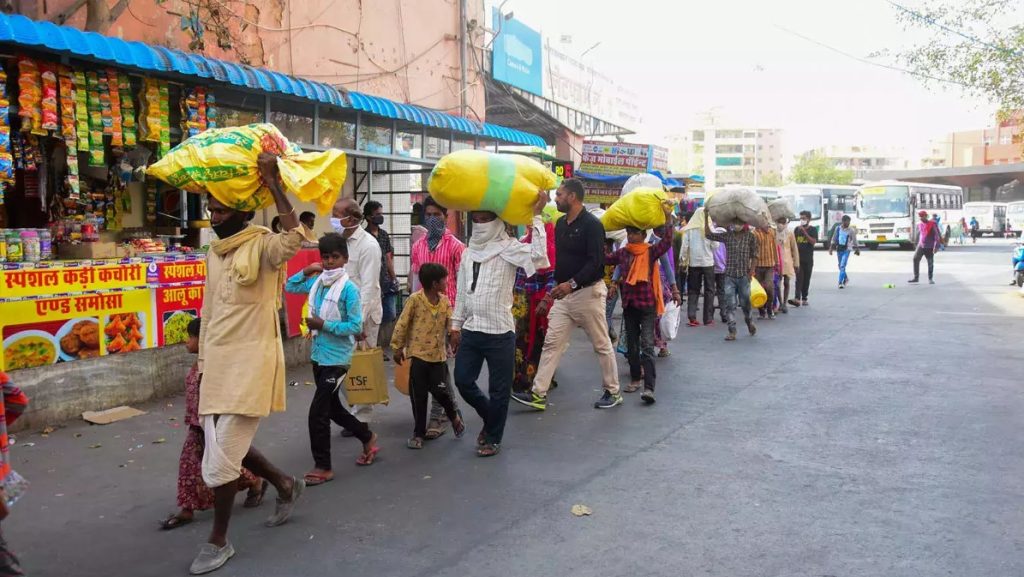Opposition parties in other states will now promise a similar guaranteed income. Incumbent governments will be tempted to do the same. While supporters will call it a breakthrough in human rights, critics will call it another ‘revdi’, a giveaway that yields few gains. I would say this move can actually do considerable harm.
First, an urban employment guarantee has perverse incentives that could yield perverse outcomes. Second, Rajasthan is, according to the RBI, among the five most financially stressed states, least able to afford Gehlot’s bounties on election eve.
The minimum guaranteed income comes in three parts. The state already offers 100 days of work at the minimum wage of Rs 259 per day under MNREGA in rural areas. It will now implement an urban employment guarantee scheme that will provide 125 days employment for urban workers per year at the same minimum wage.
For those unable to work, the government will offer a pension of Rs 1,000 per month. This is hardly a living wage. But it is the minimum guaranteed. Note that this is not a Universal Basic Income suggested by many idealists. That would provide a living wage to recipients. The Rajasthan scheme will provide much less than that.
Why do I say the scheme has perverse incentives? The current situation is supposedly one where too many rural people are migrating to cities for work. Hence, a specific aim of MNREGA is to reduce urban migration. By providing an urban employment guarantee, Rajasthan will encourage migration to cities, sabotaging the aim of MNREGA.
A rural invasion of cities will mean an accelerated spread of unauthorised shanty towns without water or electricity.
This problem has been getting worse even without a rural invasion. No state is prepared for an additional rural invasion, or has any clue as to how to provide for millions of additional urban migrants who will be attracted by an urban employment guarantee. State finances have been knocked for a six by Covid and none is anywhere near recovery to pre-Covid levels of debt. Their finances will become far worse if they implement an urban employment guarantee.
First, an urban employment guarantee has perverse incentives that could yield perverse outcomes. Second, Rajasthan is, according to the RBI, among the five most financially stressed states
The MNREGA wage ranges from Rs 221 per day in Chhattisgarh to Rs 357 per day in Haryana. But many states have additions for variable dearness allowance. Urban wages are typically controlled by the Shops and Commercial Establishment Act that provides far higher wage levels. Delhi’s minimum wage is Rs 17,234 per month which corresponds to Rs 770 per day for 26 working days per month. This gives some idea of how much more expensive an urban guarantee scheme will be than MNREGA.
Some states like Rajasthan have the same minimum wage for urban and rural areas. That makes no sense since the cost of living is so much higher in cities. In these cases, the extension of MNREGA to urban areas will not be at a higher wage.
What will happen in those circumstances? Typically, the urban market rate for casual labour in towns will be above the rural minimum wage. If so, there may be few takers at the minimum wage. The scheme will be a flop in terms of employment. Immense political pressure will build up to pay a higher urban than rural rate. That will then attract many more migrants, but will send state expenses through the ceiling.
MNREGA is supposed to build capital assets such as land levelling and bunding that raise productivity. It is unclear whether similar capital assets can be built through an urban guarantee. Urban construction requires non-fluctuating, skilled workers.
Under Fiscal Responsibility and Budget Management Act, 2003 norms, every state is supposed to reduce its debt/GDP ratio to 20%. Rajasthan’s ratio is almost twice as high and will go higher with the guarantee. An RBI study pegged Rajasthan’s debt to GDP ratio at 39.8% for 2022-23. This puts it among the states least able to afford an urban guarantee.
For those disabled or old, a pension of Rs 1,000 per month has been guaranteed. This will increase by 15% every year. That means it will double in five years, quadruple in ten, rise eight-fold in 15 years and 32-fold in 25 years. By 2043, the pension will be Rs 32,000 per month. Does this make sense?
The debt/GDP ratio of the Centre and states is far higher than in comparable developing countries. Interest costs swallow up over a quarter of all revenue, twice as much as in comparable developing countries. This reduces the sums available for investment. That will hit India’s ability to accelerate growth and become the third largest economy in the world.


